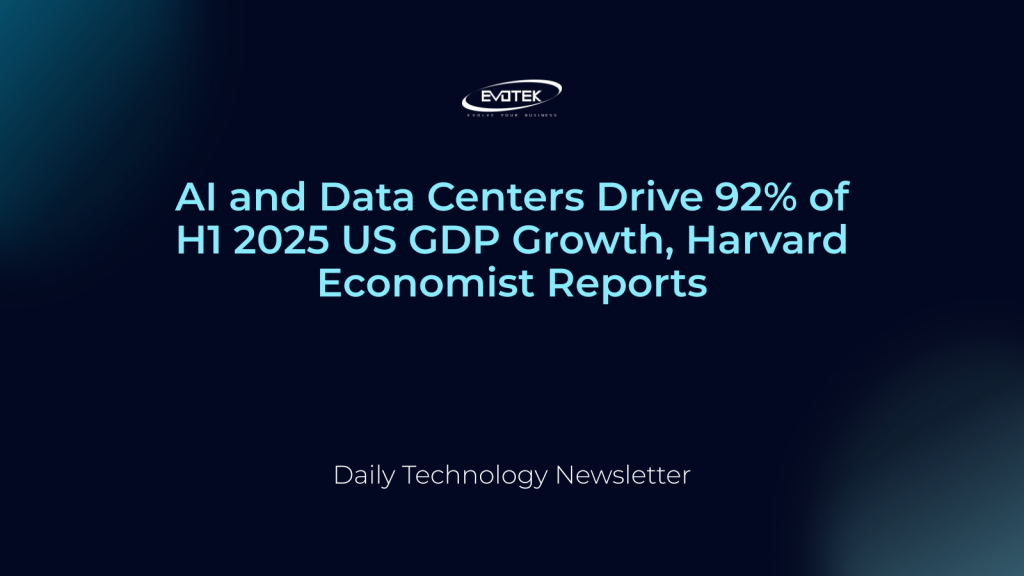The U.S. economy’s expansion in the first half of 2025 was overwhelmingly powered by substantial investments in data centers and advanced information processing technology, according to a recent analysis by Harvard economist Jason Furman.
Furman’s calculations reveal a striking dependency: if these technology-centric categories were excluded, the annualized Gross Domestic Product (GDP) growth for the period would have plummeted to a mere 0.1%. This near-stagnation underscores the increasingly critical role high-tech infrastructure plays in shaping the nation’s macroeconomic landscape.
Shared initially via X.com on September 27, Furman’s insights have resonated across financial circles. Analysts, including Robert Armstrong of the Financial Times’ Unhedged, have echoed these observations, highlighting the extraordinary surge in data center infrastructure development. Earlier in August, Renaissance Macro Research projected that the monetary contribution to GDP growth from AI data center construction had, for the first time ever, surpassed U.S. consumer spending – a remarkable feat given that consumer expenditure typically accounts for two-thirds of GDP.
Delving deeper into the specifics, Furman noted that while investment in information-processing equipment and software constituted only 4% of the total U.S. GDP for the first half of 2025, it was responsible for an astounding 92% of the overall GDP growth during that same timeframe.
While acknowledging the profound impact, Furman also added a nuanced perspective. He suggested that the U.S. economy might not have experienced an almost complete halt in expansion without this technology boom. “Absent the AI boom,” Furman explained, “we would probably have lower interest rates [and] electricity prices, thus some additional growth in other sectors.” He estimated that, in very rough terms, this compensatory growth could have potentially made up about half of the gains attributed to the AI surge.
Nevertheless, the data unmistakably points to a powerful concentration of economic impetus. The robust investment in artificial intelligence and its foundational data center infrastructure stands as the dominant force behind the U.S. economy’s measurable growth in the early part of 2025, defining what some are calling the ‘mystery’ of the economy’s current trajectory.

 日本語
日本語 한국어
한국어 Tiếng Việt
Tiếng Việt 简体中文
简体中文